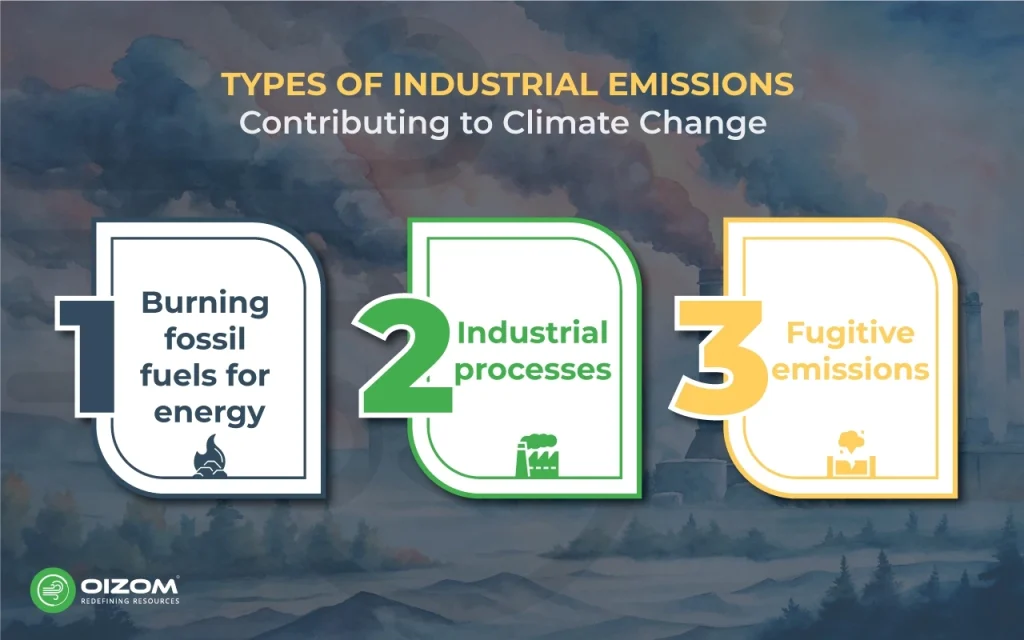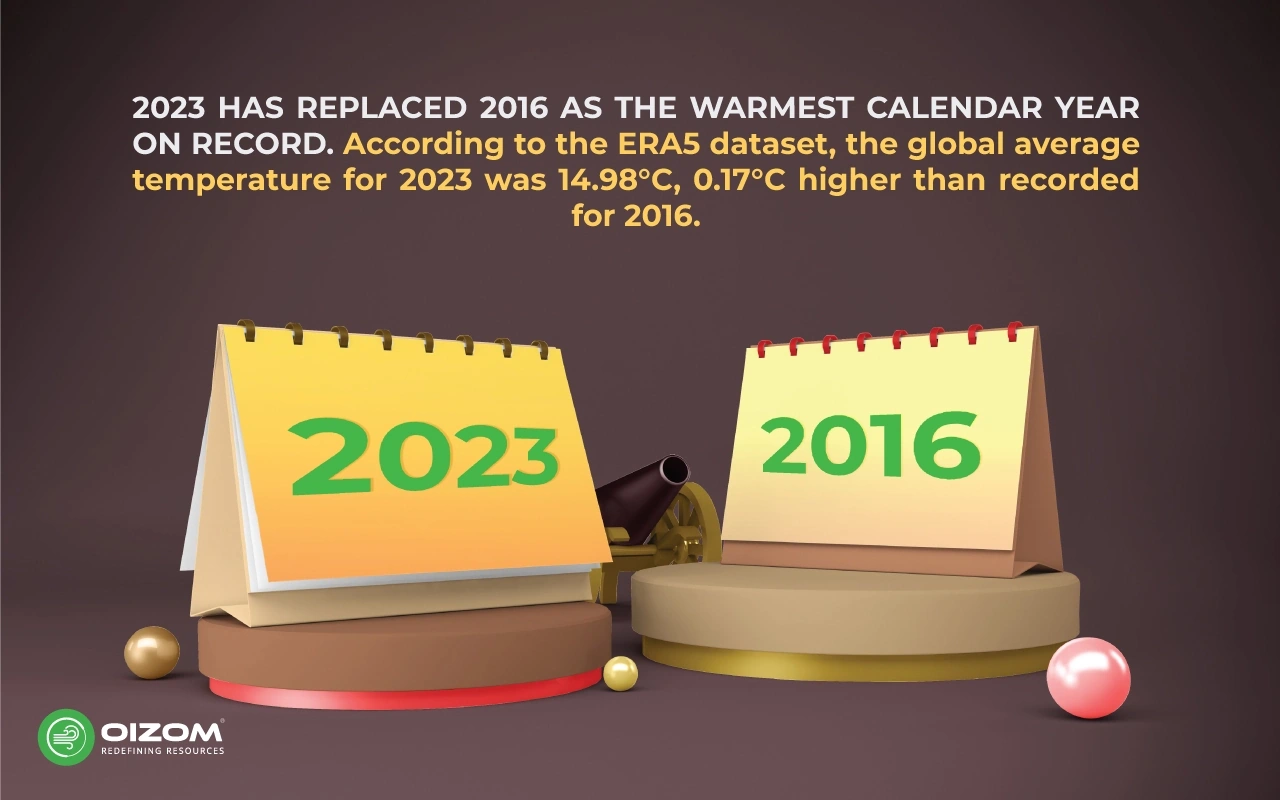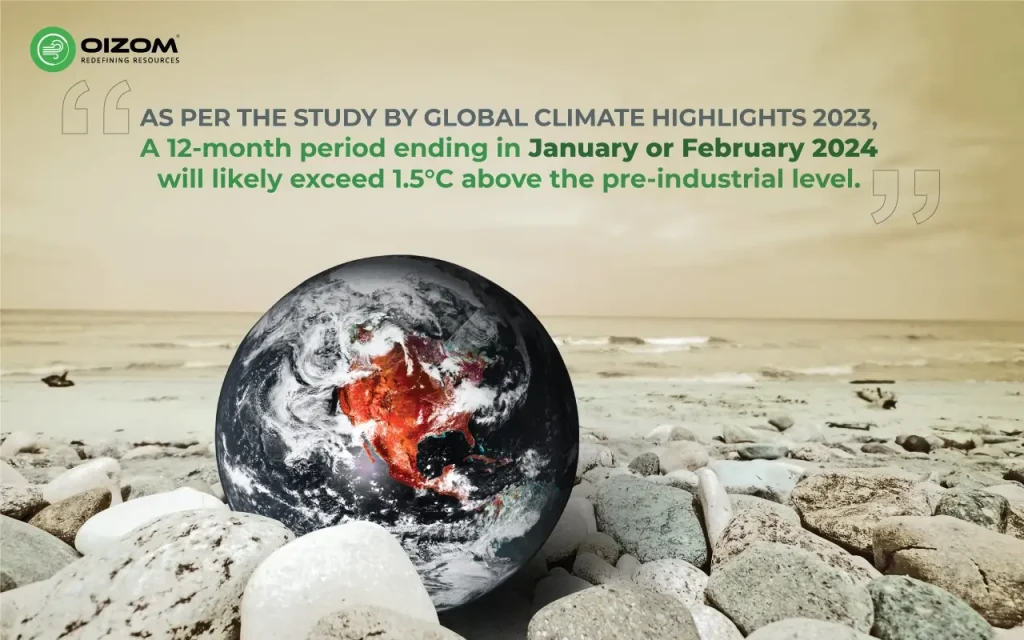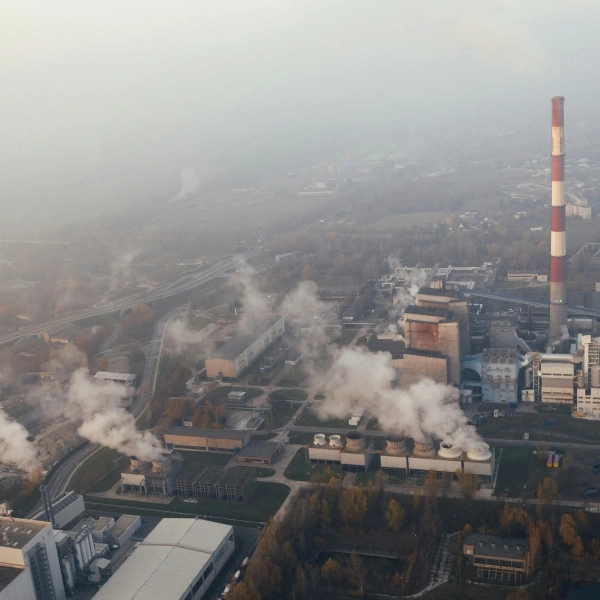Climate change is a complicated global issue that demands a multifaceted response to mitigate its impacts. The key causes of climate change are the use of fossil fuels to generate power and manufacture commodities, deforestation, inefficient transportation services, food production, rising energy consumption, and, in a nutshell, the overexploitation of natural resources.
Almost a quarter (23%) of greenhouse gas emissions in the United States come directly from industrial sources such as manufacturing, food processing, mining, and construction. These direct emissions result from various activities, including on-site combustion of fossil fuels for heat and power, non-energy usage, and chemical processes employed in manufacturing iron, steel, and cement. Among them are carbon dioxide (CO2), methane (CH4), nitrous oxide (N2O), and fluorinated gases. The blanket of these gases around the Earth thickens, trapping more solar radiation and warming the planet. This poses many risks to humans and all other life forms on Earth. This blog will describe various types of industrial emissions contributing to climate change and provide solutions for planning mitigation strategies.
Types of Industrial Emissions Contributing to Climate Change

Large global companies are responsible for at least 50% of all greenhouse gas emissions into the environment. These emissions have worldwide consequences and can be deadly to other environmental issues. Every day, climate change’s effects become more noticeable in countries worldwide. Many types of industries emit various pollutants, which contribute to climate change. Some of them are listed below:
1. Burning fossil fuels for energy:
Using fossil fuels to generate power and heat contributes significantly to global emissions. Most electricity is still generated by burning coal, oil, or gas, which emits carbon dioxide and nitrous oxide, two potent greenhouse gases that blanket the Earth and trap the sun’s heat. Wind, solar, and other renewable sources generate little more than a quarter of global electricity, and, unlike fossil fuels, emit little to no greenhouse gases or pollutants into the atmosphere.
2. Industrial processes
Manufacturing and industry generate emissions, the majority of which come from the combustion of fossil fuels to make cement, iron, steel, electronics, plastics, clothing, and other products. Mining and other industrial operations produce gasses, as does the construction sector. Machines used in manufacturing frequently run on coal, oil, or gas, and some products, such as plastics, are manufactured with chemicals derived from fossil fuels. The industrial industry is one of the leading sources of greenhouse gas emissions worldwide.
3. Fugitive emissions
Fugitive emission is described as the unintentional and unwanted release, leakage, or emission of gases or vapors from pressure-containing equipment or facilities, as well as components within plants such as valves, piping flanges, pumps, storage tanks, valves, compressors, and so on. Fugitive emissions are frequently referred to as leaks or leakages. The term ‘fugitive’ refers to emissions that are not considered or calculated during the design of equipment and components.
While this environmental harm is undesirable, fugitive emissions might pose a more immediate concern. Volatile organic compounds (VOCs), such as benzene, can be extremely toxic to people when exposed to them for an extended period of time, putting workers at oil refineries or chemical factories at risk of major health consequences. Similarly, communities located close to such plants are at risk.
Impacts of Industrial Emissions on Climate Change
Industrial emissions greatly impact climate change, with key sectors such as cement, iron, steel, and chemicals accounting for around 20% of worldwide CO2 emissions. These emissions are difficult to eliminate since they originate not only from energy use but also directly from the industrial processes involved. Furthermore, human activities, especially fossil fuel combustion, are primary drivers of the current global warming trend, surpassing natural factors like solar variations or volcanic activity.
The manufacturing industry contributes significantly to global air pollution, emitting harmful waste vapors that endanger human health and the environment. These emissions can degrade the environment, emit unpleasant odors, and contribute to air pollution, impacting plant employees’ and adjacent residents’ health and safety. Numerous industries, including oil and gas, chemical and petrochemical, biogas, pharmaceuticals, food and beverage, flexographic printing, packaging, and many others, are associated with releasing volatile organic compounds (VOCs). However, industrial emissions have some impacts on climate change.
Hotter Temperature: As greenhouse gas concentrations grow, so do global surface temperatures. Almost all land areas are seeing increased hot days and heat waves. High temperatures exacerbate heat-related illnesses and make working outside more challenging. When temperatures rise, wildfires spread more easily and quickly. Temperatures in the Arctic have risen at least twice as quickly as the global average.
Global temperatures: 2023 is the warmest year on record, close to 1.5°C above pre-industrial level.

More Severe Storms: Destructive storms have gotten increasingly intense and frequent in many areas. As temperatures rise, more moisture evaporates, exacerbating heavy rains and flooding, resulting in more devastating storms. The warming ocean also impacts the frequency and intensity of tropical storms. Cyclones, hurricanes, and typhoons feed on warm water at the ocean’s surface. Such storms frequently demolish homes and communities, resulting in fatalities and significant economic losses.
Loss of species: Climate change threatens the survival of organisms on land and in the ocean. These hazards become more severe as temperatures rise. Exacerbated by climate change, the globe is losing species at a 1,000-fold higher rate than at any other point in recorded human history. One million species face extinction during the next several decades. Climate change poses various dangers, including forest fires, harsh weather, and exotic pests and illnesses. Some species can move and thrive, while others will not.
Health Risks: Climate change is the most serious health danger to humanity. Climate impacts are already causing health problems, including air pollution, disease, extreme weather events, forced displacement, mental health strains, and increased hunger and poor nutrition in areas where people cannot grow or find enough food. Each year, environmental factors claim the lives of approximately 13 million individuals. Changing weather patterns are spreading diseases, and extreme weather events cause more deaths and make it difficult for healthcare systems to keep up.

Solutions and Mitigation Strategies
Sustainability in industrial development entails reducing environmental effects while increasing economic and social advantages. This can be accomplished by utilizing renewable energy sources, minimizing waste and emissions, and embracing circular economy principles.
For example, companies can transition to renewable energy sources like wind or solar to power their operations instead of relying on fossil fuels. They can also implement energy-efficient practices, such as upgrading equipment and using automation, to reduce energy consumption.
- The circular economy method can help to reduce waste by reusing, repurposing, or recycling resources. This can assist in minimizing the demand for raw materials, lowering the environmental effect of extraction and processing.
- Investing in sustainable supply chains and encouraging sustainable behavior among suppliers and customers.
- Sustainable farming approaches, such as regenerative agriculture, can help reduce carbon emissions while boosting soil health and biodiversity.
- Sustainable forestry methods, such as reforestation and deforestation reduction, can help reduce carbon emissions while enhancing biodiversity and ecosystem health.
- A strong domestic carbon credit market can encourage firms to decrease their carbon footprint while encouraging innovation in renewable energy and energy efficiency.
- Promoting climate education can help raise awareness about the need to tackle climate change and inspire individuals and communities to act.
This commitment must be supported by investments in green technologies and employee training for sustainability. Additionally, access to reliable data and analytics is vital for monitoring progress and identifying opportunities for further carbon reduction. Monitoring Air Quality with Oizom devices such as AQbot is an industrial-grade single parameter with a buzzer feature and memory for six months of in-device data backup, providing real-time data on the Envizom software module. The alarm sounds, ensuring workers’ safety.
Conclusion
Finally, our discussion on industrial emissions and their climate change connection gave insight into top contributor industries that impact climate change. Industries are major contributors to CO2 emissions. But it’s not all a lost cause. These measures seek to provide these large corporations with the tools and means to reduce their greenhouse gas emissions and the damage caused by imminent climate change. So, as we look towards a cleaner future, embracing such technologies and pushing for sustainable practices across the board is key. Every step towards reducing our carbon footprint is towards a cooler, greener planet. Let’s make it happen together.
FAQs
The industry contributes to climate change primarily by emitting greenhouse gases like CO2, especially from sectors such as cement, steel, and chemicals. These emissions arise not only from energy consumption but also from the industrial processes themselves. Mitigating these emissions include adopting cleaner energy sources and technologies like carbon capture and storage (CCS).
Yes, industrial chemicals do contribute to greenhouse gases. The production and use of various chemicals release a significant amount of CO2 and other greenhouse gases into the atmosphere. For example, the production of cement releases CO2 not just from energy use but also from the chemical reactions involved in producing cement from limestone.
The biggest contributors to climate change are sectors emitting large quantities of greenhouse gases, notably the energy sector (electricity, heat production, and transportation), agriculture, industrial processes, and waste management. Among countries, historically, the largest contributors have been high-income nations due to their larger industrial bases and higher per capita energy consumption rates.






